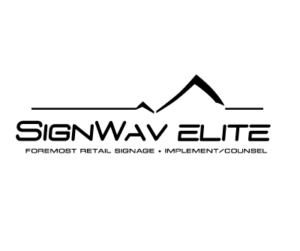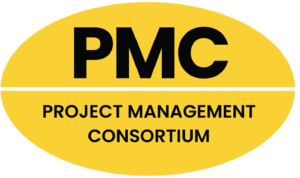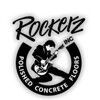
Every construction project has its own set of hazards, and if not managed, these risks can prove fatal to your bottom line.
In fact, according to a new report by Dodge Data and Analytics many contractors continue to struggle with construction site management risks. Many are now turning to technology to help analyze and mitigate risk and improve safety.
Financial and legal matters are among the top concerns by builders when it comes to risk assessment.
However, what many bosses are overlooking is the basic safety risks on site that can delay completion or even jeopardize an entire project. A detailed and effective Risk Management Plan is a must for any contractor.
The most common risks on a job include theft, fire and water damage.
Water, water everywhere.
Water damage is the top cause of loss on a job site, so it’s important to take steps to reduce the risk.
Water can cause a substantial amount of damage in a short period of time. If your building has framing in place, the water can rot the wood or cause it to swell and shift. When you’re further along in the building process, too much moisture can lead to mold growth, which is expensive to remediate. Broken pipes, weather changes, and vandalism can all lead to water damage on a job site. When you have multiple subcontractors and laborers working at once, someone can easily make a mistake or hit a pipe by accident. This common problem can have serious results, so it’s important to have a plan in place to prevent, detect, and respond.
Preventing Water Damage
The first step in reducing the risk of water damage is only allowing licensed and experienced plumbers to work as subcontractors on your job. All plumbing work should be cleared before the plumbers start but everyone working on the site should know where pipes are located to avoid digging too deep. Another step in preventing water damage is following all construction regulations. Keep up with regular quality control testing and conduct periodic inspections throughout the construction process.
Obviously, preventing damage in the first place is the goal, but you need to be able to act fast if something goes wrong. An electronic leak detection system can alert you to potential uncontrolled water. This is especially helpful if the damage happens when you’re away from the site.
A clear emergency response plan is a must. If water spreads through the building, everyone on the site should know what to do to clear out the flood. Industrial fans and dehumidifiers should be easily accessible. When you start using fans and other moisture-reducing equipment right away, you can control how much damage occurs to your building.
Fire risk
One reason fire risk is high is the fact that a suppression system is often one of the last systems to be installed in a building. As a result, if a fire does break out, it will be harder to tackle as you may not have enough fire extinguishers in your trailer or on the site.
Also, a building that has only been framed has a lot of exposed wood, which could become kindling. Hot work can also increase problems – like welding, grinding, and cutting. Certain types of temporary heating equipment might also put a job at a higher risk for a fire as well as temporary wiring and lighting because they are not up to building standards. Employees smoking too remains a leading cause of fires on job sites.
Reducing Flammability Risks
In order to lessen the risk of fire, you need to set some ground rules from day one. Introduce designated smoking areas that are far away from anything that could burn. Post signs and enforce the smoking rules vigilantly. Any hot work that is contracted out should be handled by licensed and permitted workers.
Follow the regulations outlined in NFPA 241 – the Standard for Safeguarding Construction, Alteration, and Demolition Operations.
If you allow any of your workers or subcontractors on the job site to set up temporary lighting or heating equipment, it should be approved by your team. Place heaters only on platforms or non-combustible flooring and keep areas around the heaters completely clear. Before the fire suppression system is in, make sure to keep plenty of fire extinguishers available. They should be easy to access, and all laborers should know how to use them.
Risk of Theft
Before the building is complete, fewer physical barriers, like windows and doors, keep people from entering without proper access or authorization. A construction site often uses temporary fencing to set a perimeter. However, people can simply climb over the fence or break through it.
Most construction companies keep certain pieces of equipment on-site for convenience, especially when they’re working on a specific part of the project. For example, the concrete subcontractor may leave forms and materials throughout the pours. Doing so makes it easier on the laborers but can increase the risk of theft. Construction tools and equipment are valuable and easy to sell, making them prime targets for burglars.
Most tools and equipment used at a site won’t be specifically marked, have a logo or otherwise be identifiable, meaning a thief can make quick cash by selling to the highest bidder. Instead of taking the risk, consider renting some equipment, to create less of a target for thieves.
In addition to theft, a similar risk on a construction site is vandalism. Someone may break through the fencing simply to spray paint the unfinished walls or destroy the windows. Some burglars leave a wake of destruction in their path. Vandalism can cause a lot of damage in a short period of time.
Stopping the thieves
The first step to reducing the risk of theft and vandalism on your job site is to install and maintain a strong physical barrier. This could include a single locked access gate that is only accessible to subcontractors and members of your team, along with warning signs that only those who are authorized should enter. Lighting can go a long way to reduce theft, especially since many break-ins happen late at night or early in the morning. Install temporary lights that can illuminate the site and can reduce areas where thieves can hide.
And remember to keep tools and materials locked up and out of sight when not in use.
Along with the physical barrier, you should consider an electronic surveillance system with sensors and alarms. More advanced sensors can detect temperature changes, water exposure, or breaking glass, which gives you a better idea of exactly what is happening at your site. If your job site is in a high crime area or suffered previous break-ins, consider hiring a security guard during non-working hours for an added layer of protection.
Keep inventory tracking up-to-date so things can’t easily go missing. Make sure to order items as they’re needed instead of stocking up and keeping a lot of extra materials at the site.
New technology such as drones are also being used as method of tracking equipment and overseeing security.
The importance of a Risk Management Strategy
As you can see, protecting your job site is important and should be part of an overall Risk Management Plan. It is a crucial for any company to ensure any of these risk factors are reviewed and proper processes are in place should the worst scenario arise.
Aside from the safety issues, there is also the risk of financial problems like increases in material prices or a change in the economic factors, plus legal issues or disputes over poor management, or broken contracts can add to the worry.
With the presence of rising costs, new industry trends, more complex projects, and increased safety concerns, having a risk management plan is more crucial than ever.
But remember that construction risk management is not a siloed activity — it must require the contribution of the major players in your company.
The three key players are the owner team, design team, and contractor teams, since each team has its own set of practices and procedures. The stakeholders also play an important role that can impact risks.
The types of information to monitor include cash flows, drawings and diagrams, schedules and cost information, inspections, project files and logs, contracts, and regulatory documents.
Risk management is not a set-and-forget process. Updates on risk should be communicated at every level.
Consistent monitoring and revisions to your plan will help increase the resilience of your business against any possible risk. Like a dynamic document, your plan should evolve and change over time.
Author: Jim Arabia is VP of Marketing at BigRentz the nation’s largest online construction rental marketplace. With 2,000 rental partners in 8,000 locations across the US, BigRentz supplies construction companies in every state including Canada
Current Issue:
CCR ISSUE 7 | Designing with Intention: How Watches of Switzerland turned retail into an experience •
CCR ISSUE 7 | Designing with Intention: How Watches of Switzerland turned retail into an experience •





























